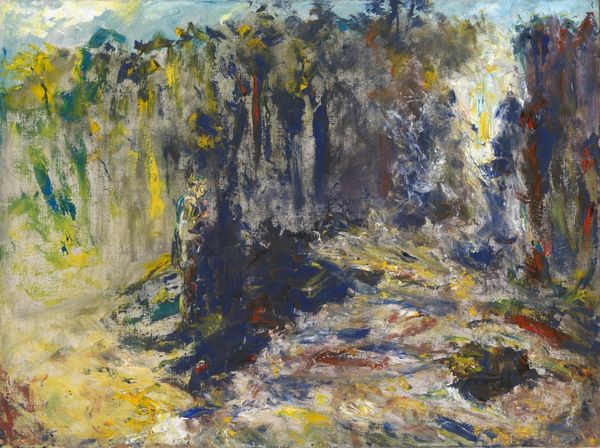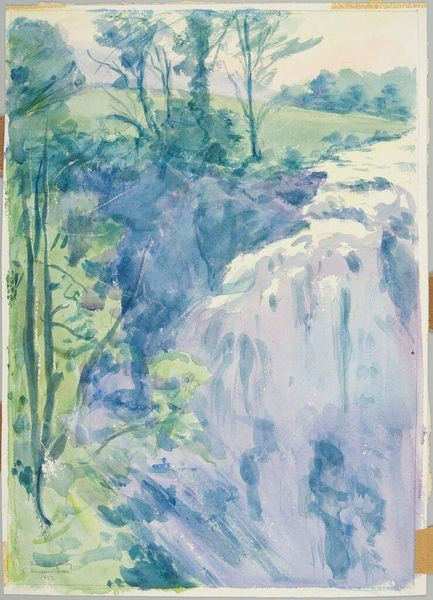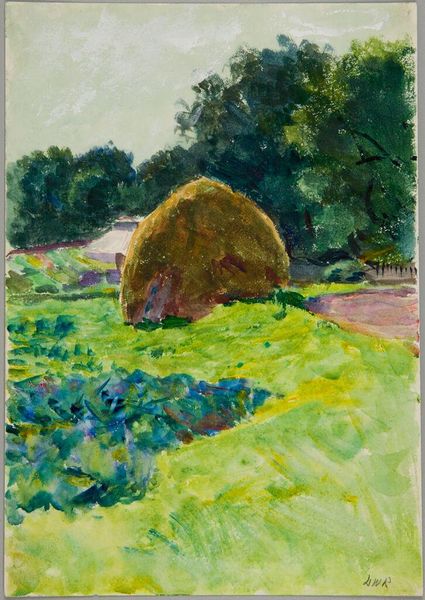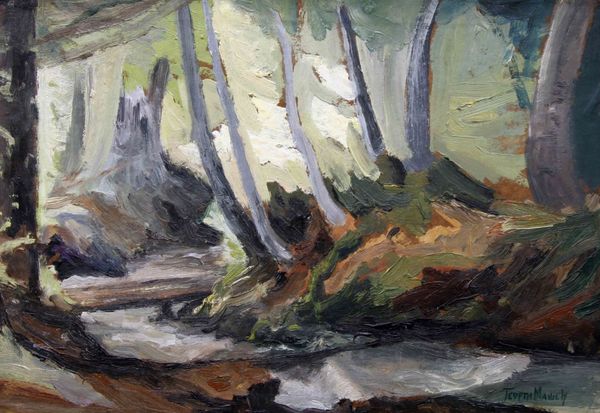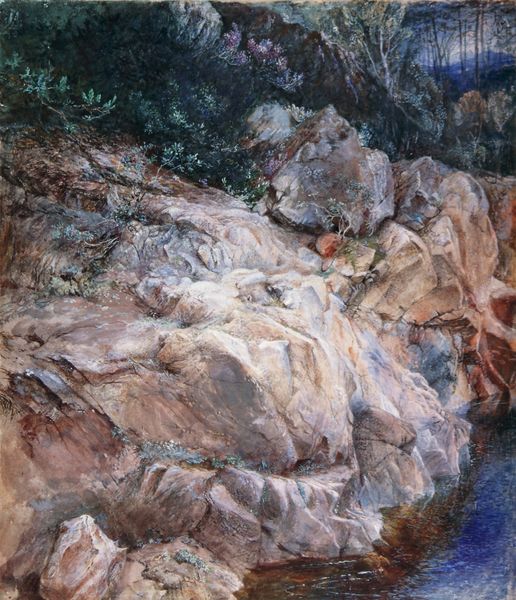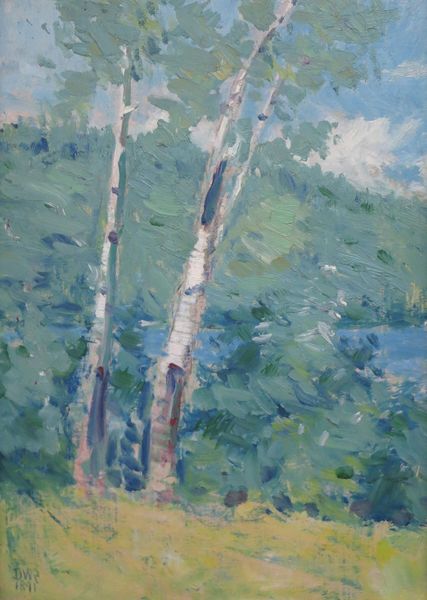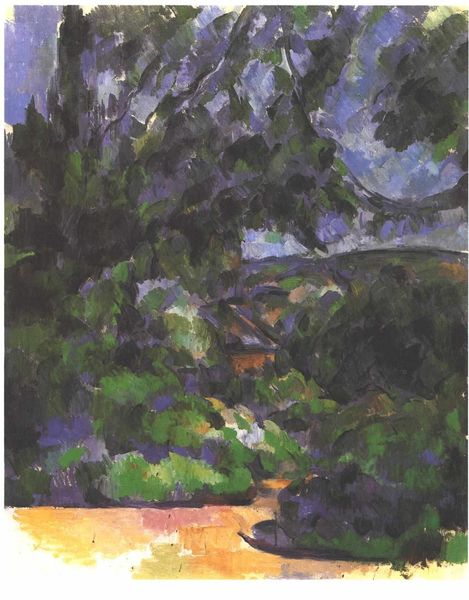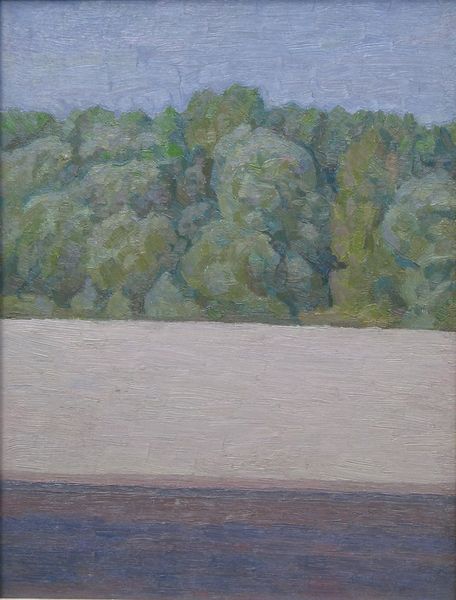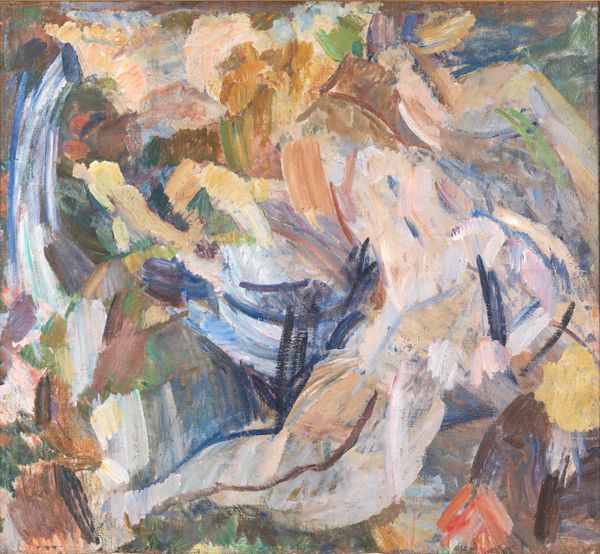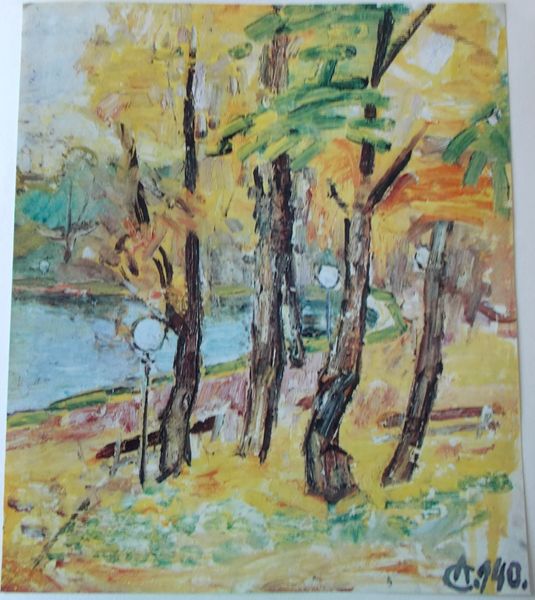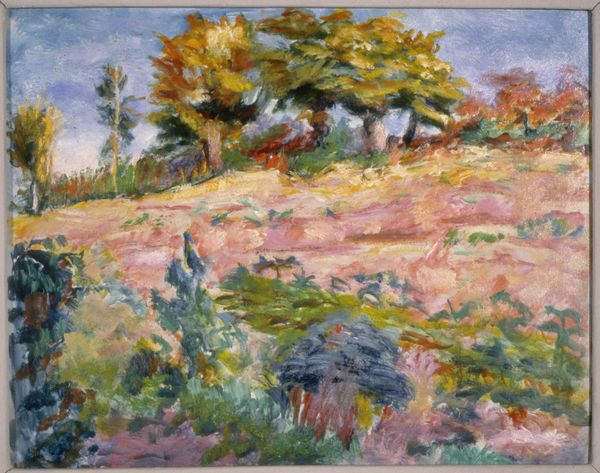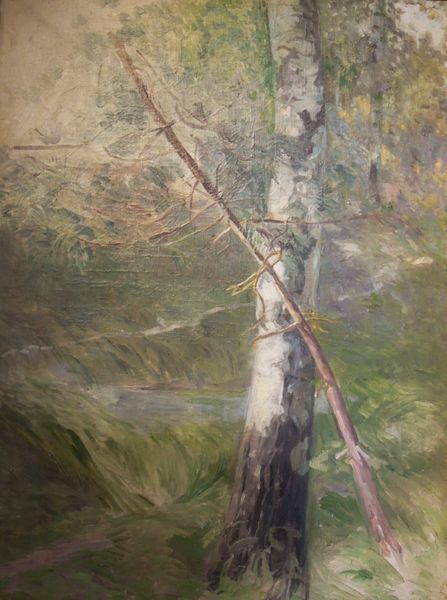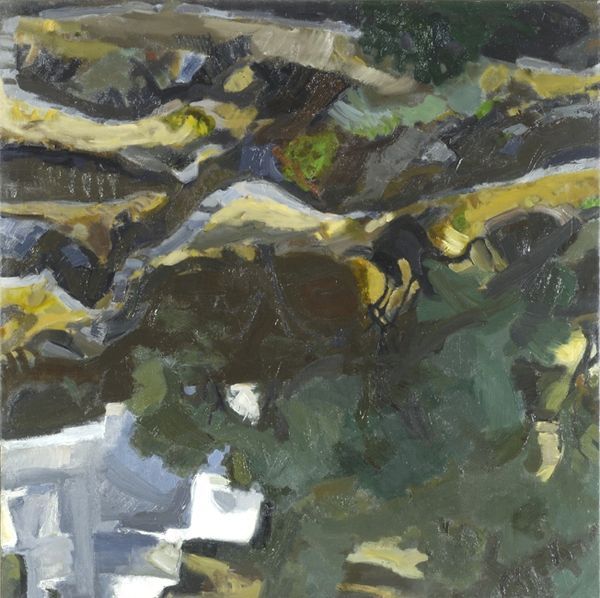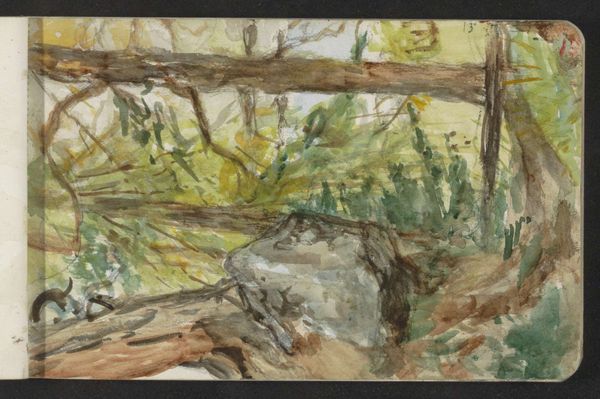
Dimensions: 54.5 x 45 cm
Copyright: Public domain
Curator: This is Hélène Guinepied’s "Haystack," an oil painting created circa 1910. Editor: It has this wonderful sort of hazy quality. Almost dreamlike, despite the fairly mundane subject matter. Curator: It's interesting that you find it mundane. Haystacks, particularly around the turn of the century, spoke to larger agricultural and social systems. Guinepied, by situating herself within the Impressionist landscape tradition, actively participated in dialogues around rural life, labor, and the pastoral ideal. Editor: I see that, but I'm drawn to the materiality of it all. The thickly applied paint, likely done en plein air to catch the light… you can practically feel the weight and texture of that haystack. What kind of labor was needed for creating and sourcing materials for oil paints like this? How was that labor related to that of the workers out in the fields? Curator: Excellent point. Oil paints by the early twentieth century were increasingly industrialized, making art supplies accessible but also dependent on new forms of production and distribution. That very process links urban studios and rural realities. The artist moves to a space for observation and is impacted by labor in the processes of production for this oil painting itself. Editor: And then you have to wonder about her access to this setting, the haystack in this field... What class dynamics were involved in Hélène’s access to painting this view? Curator: It also brings up the question of art schools. What social strata do they belong to? Where does Guinepied get to exhibit such a landscape scene, for whom, and where? Her training is rooted in institutional trends. It is not naive. The "spontaneity" of Impressionism had become quite codified. Editor: I'm left thinking about how "Haystack" is not simply an observation but rather a recording and culmination of labor at every step. Curator: Exactly, it’s an object embedded in a very intricate and public system of relations. Editor: It makes you consider what we’re left with after looking at it from production to exhibition!
Comments
No comments
Be the first to comment and join the conversation on the ultimate creative platform.
